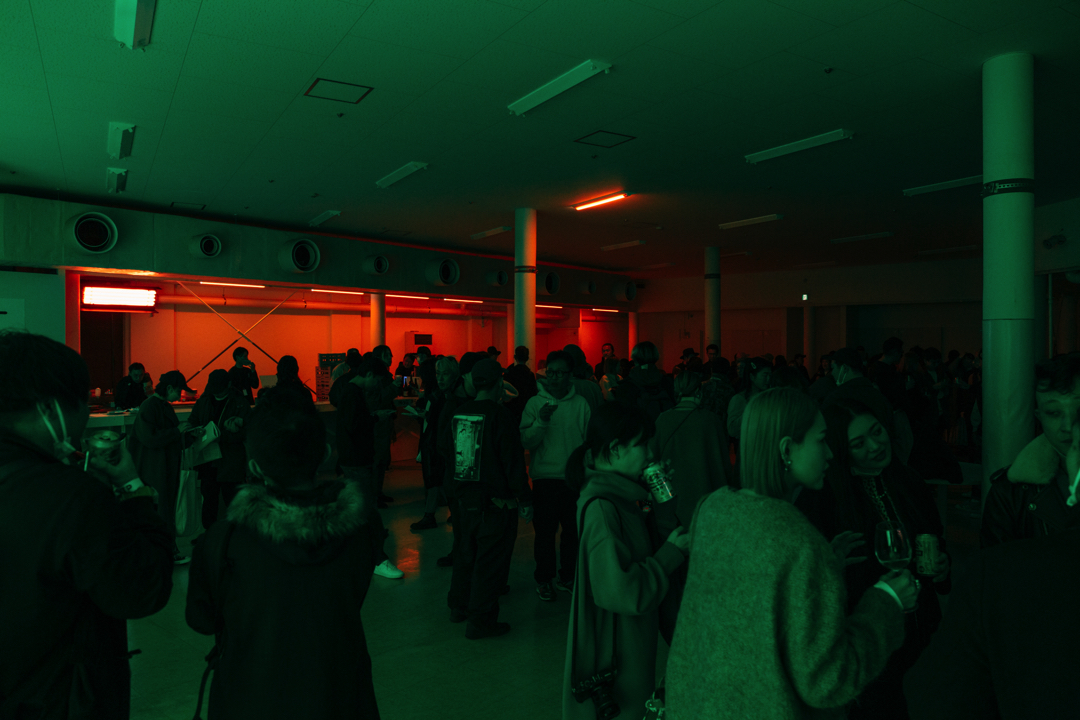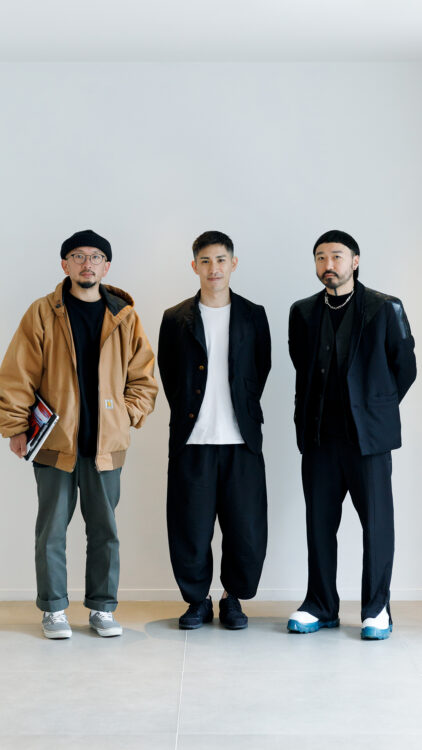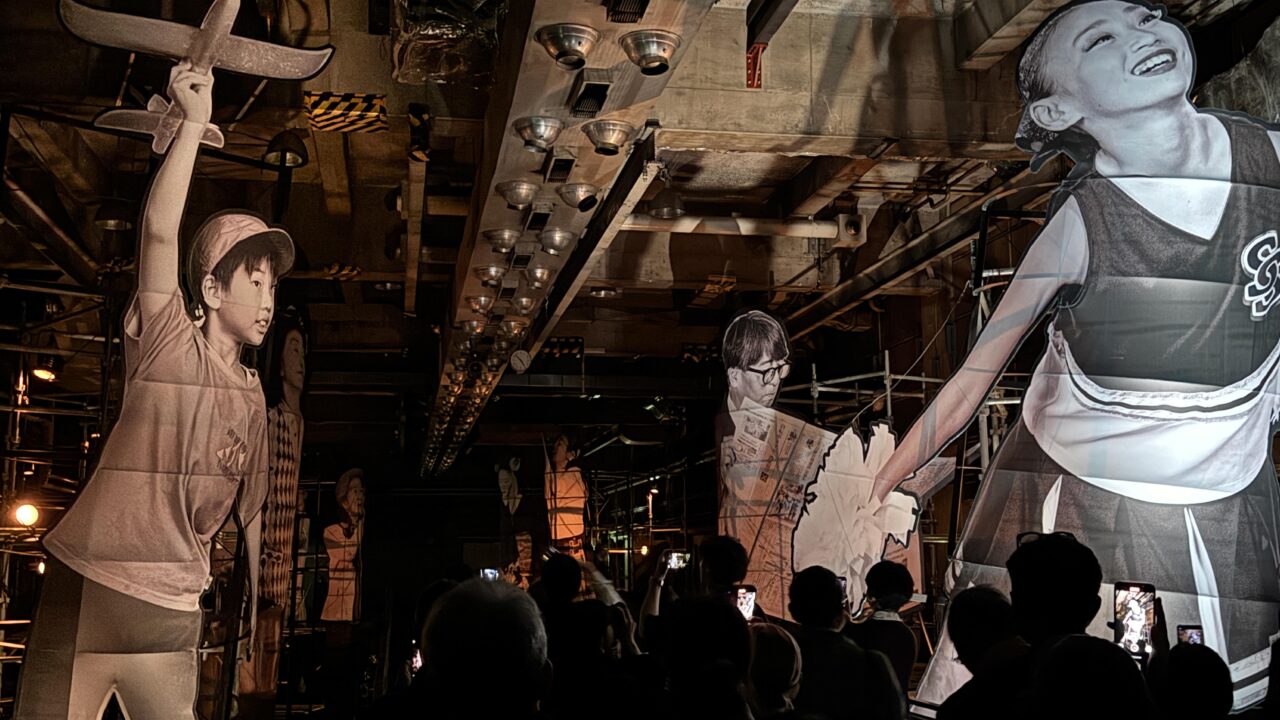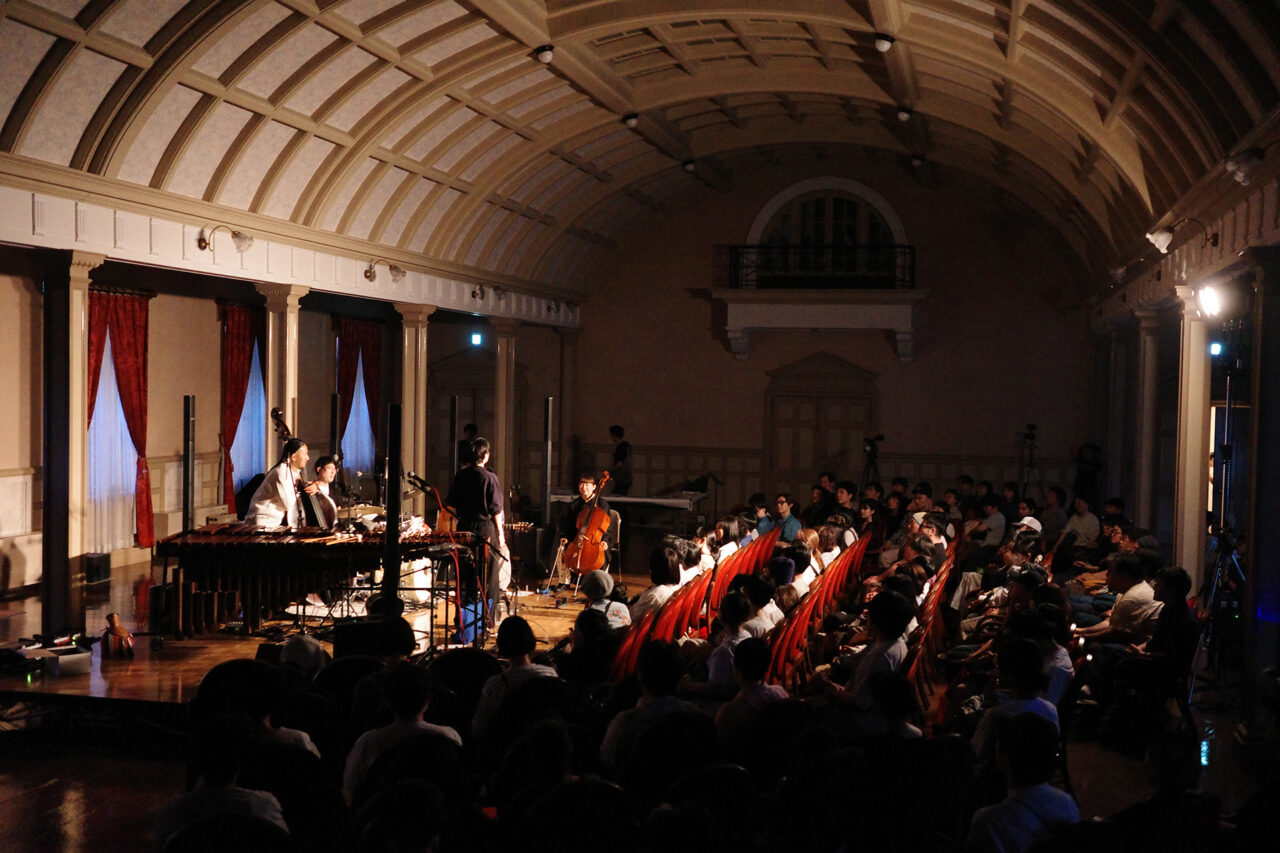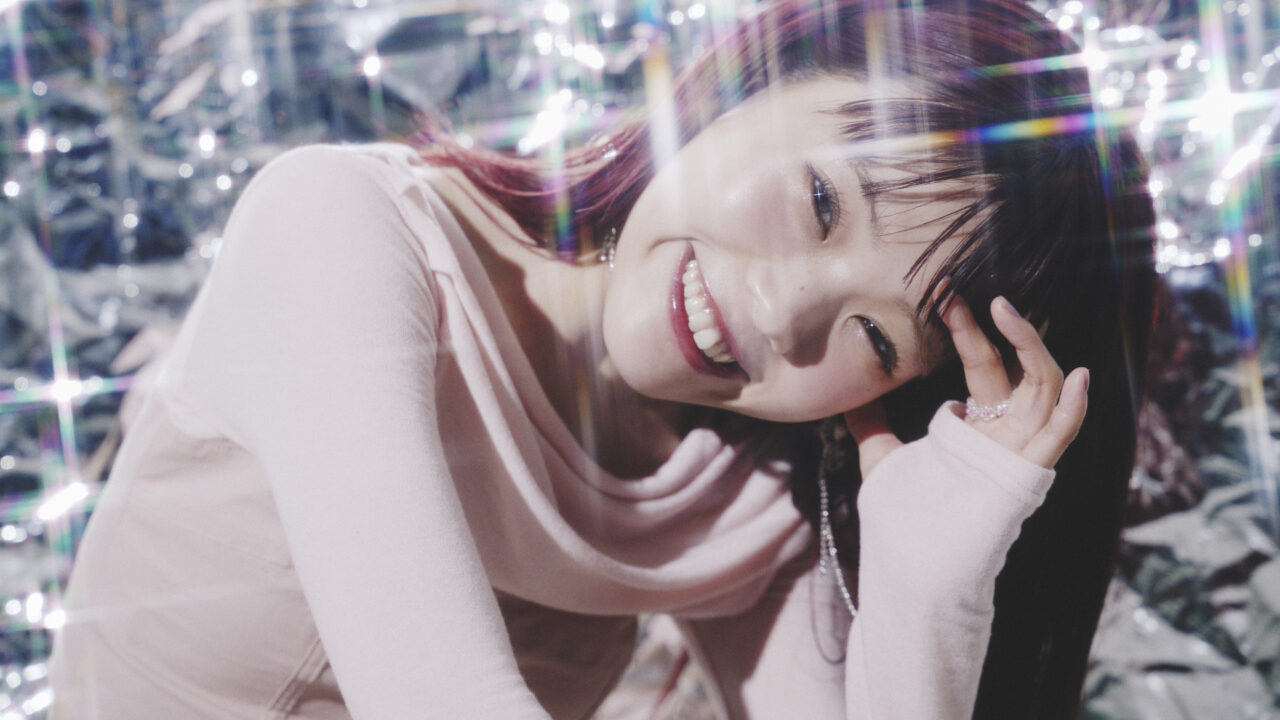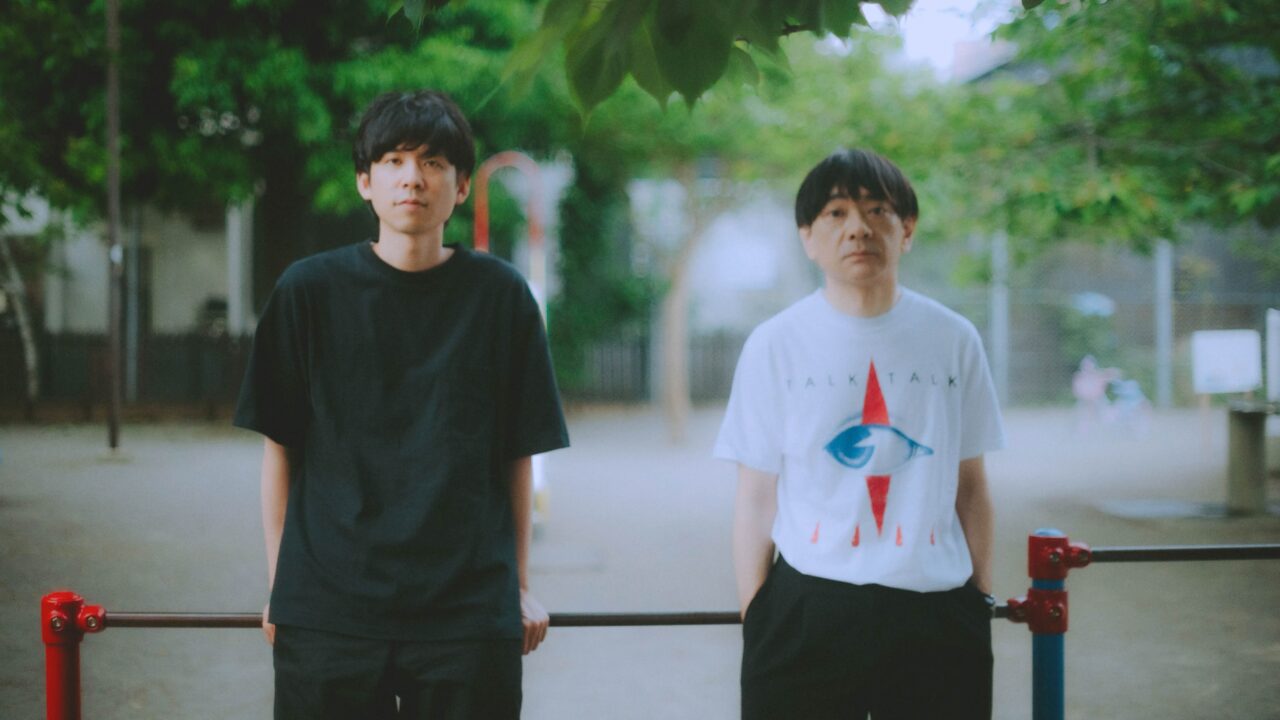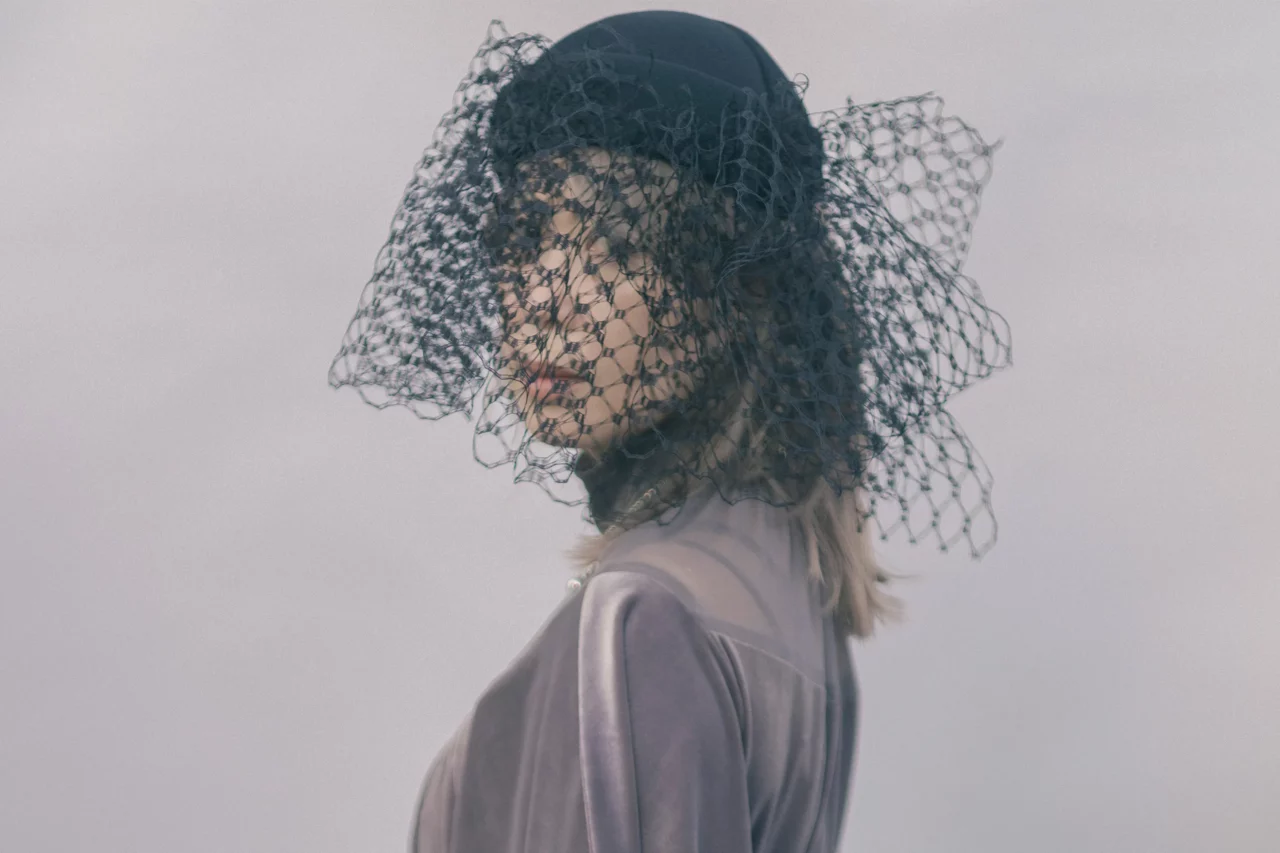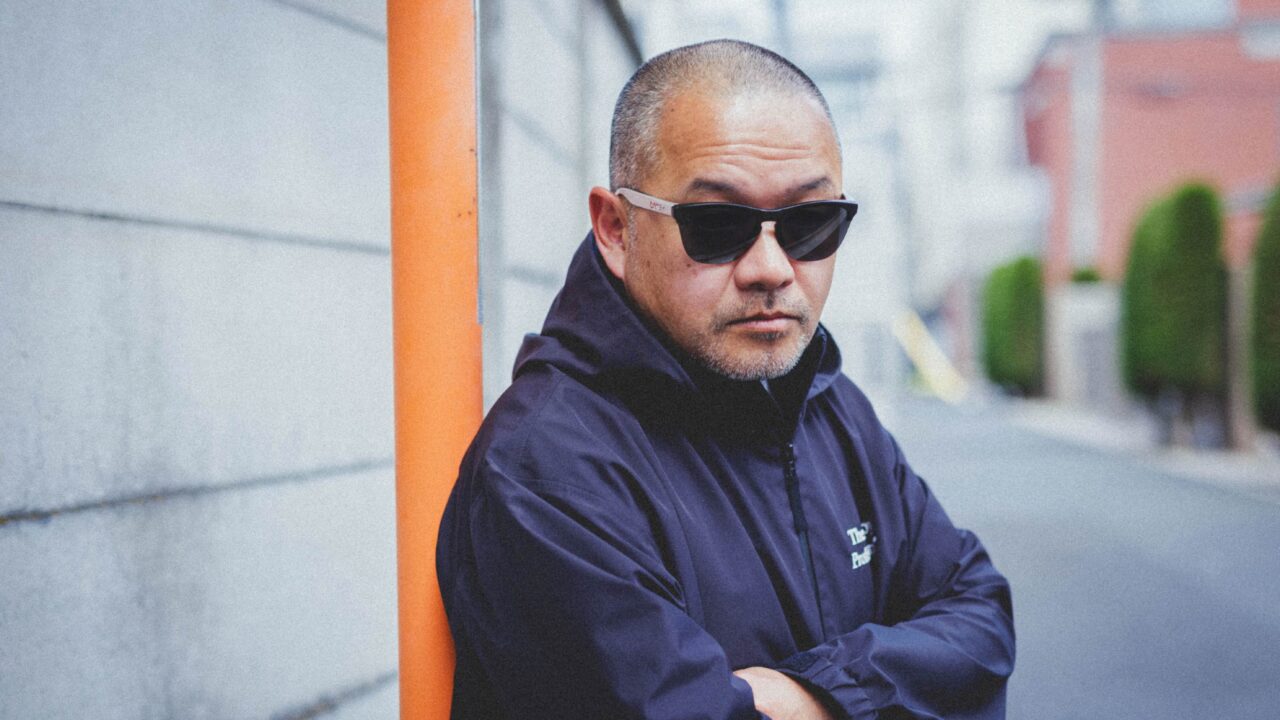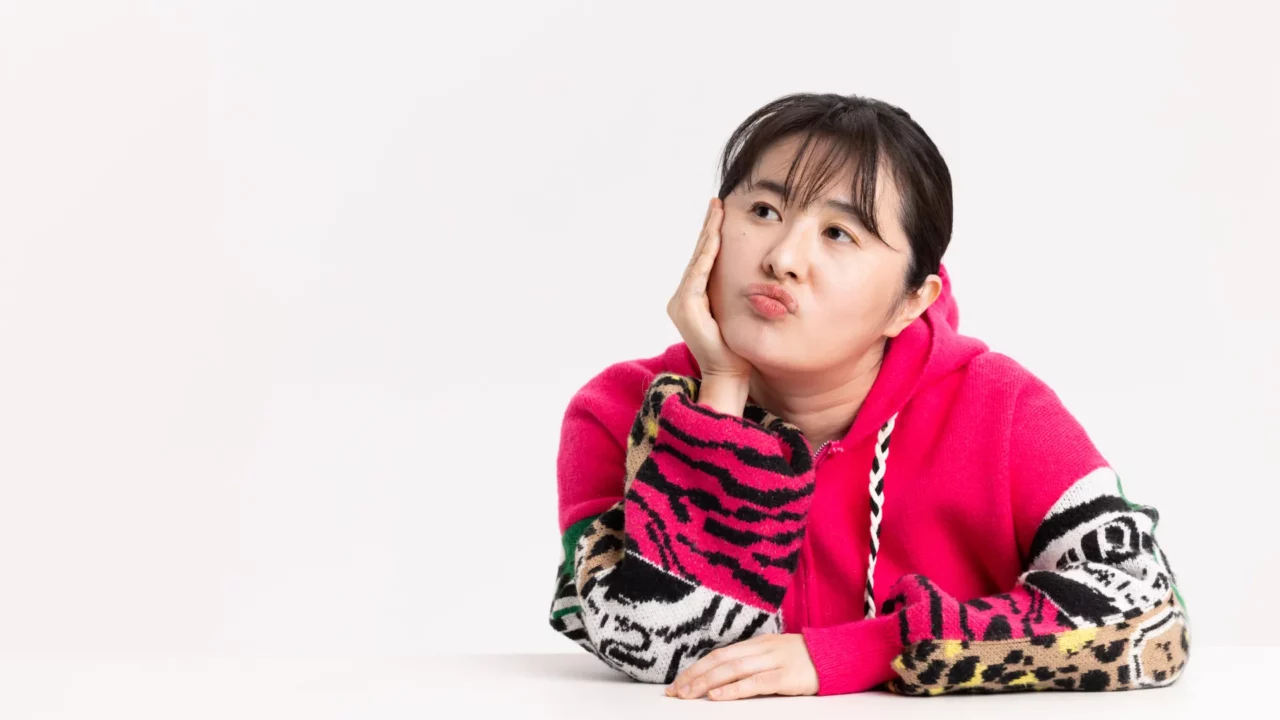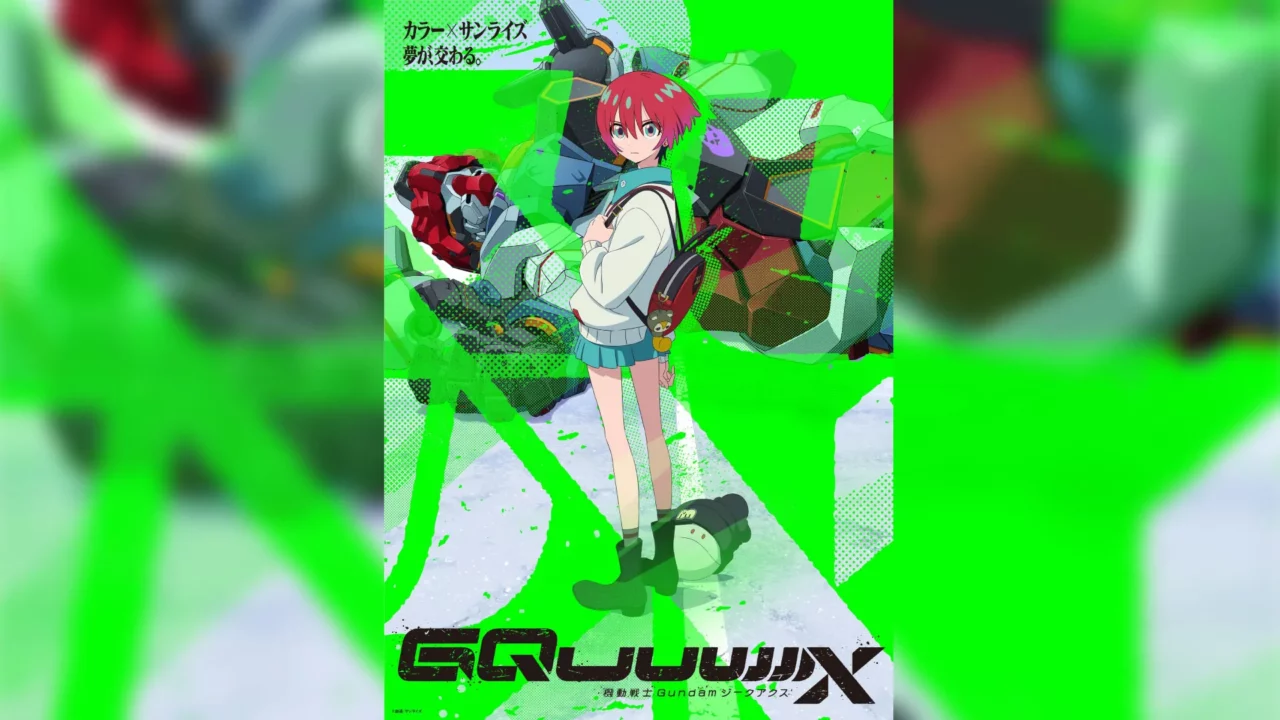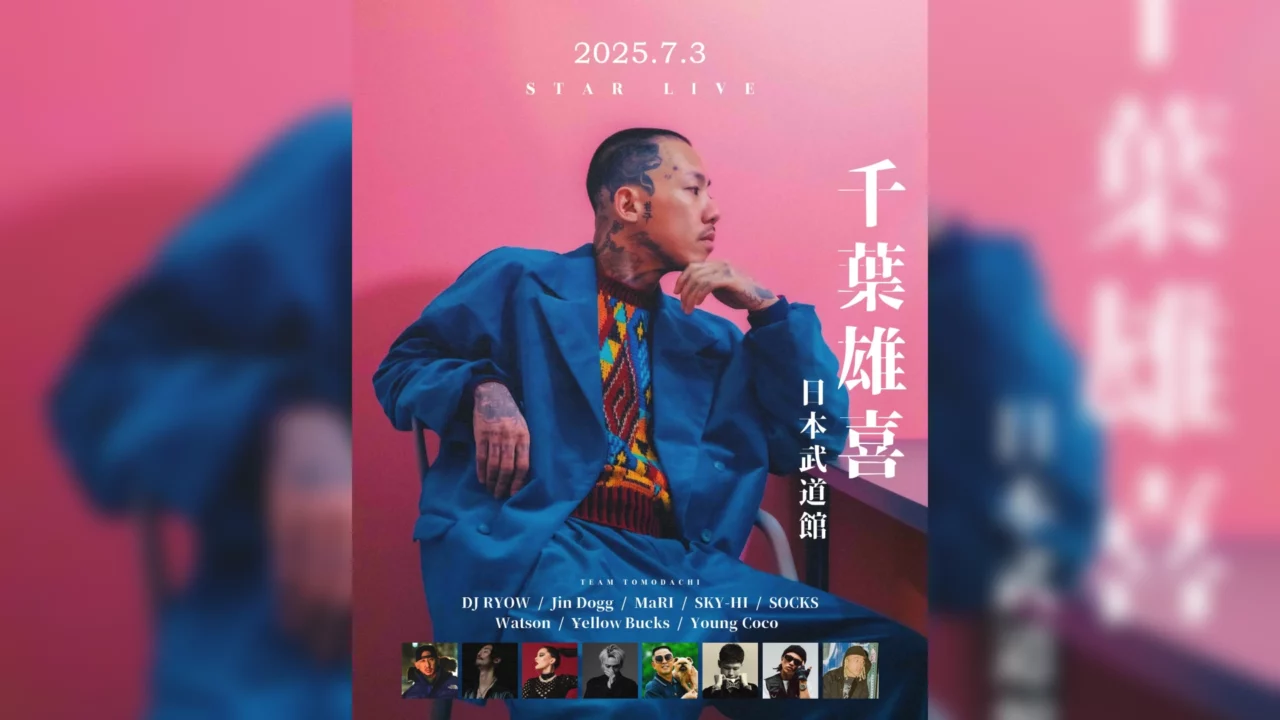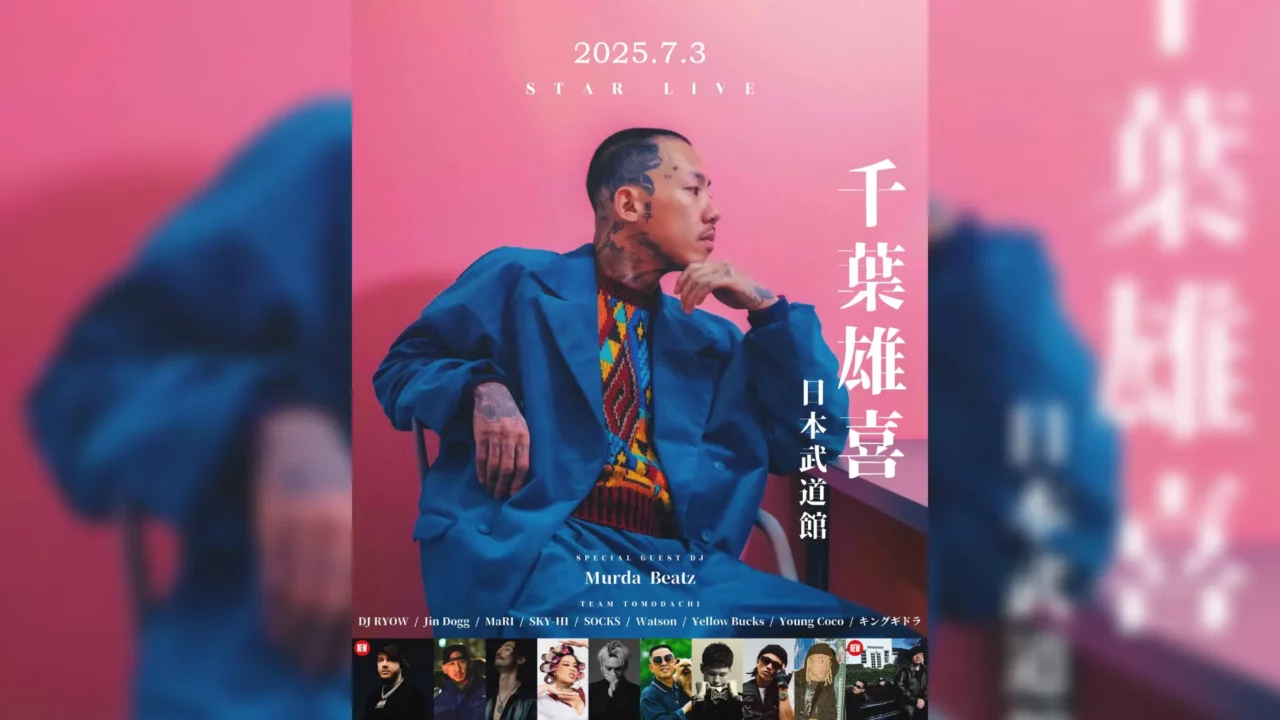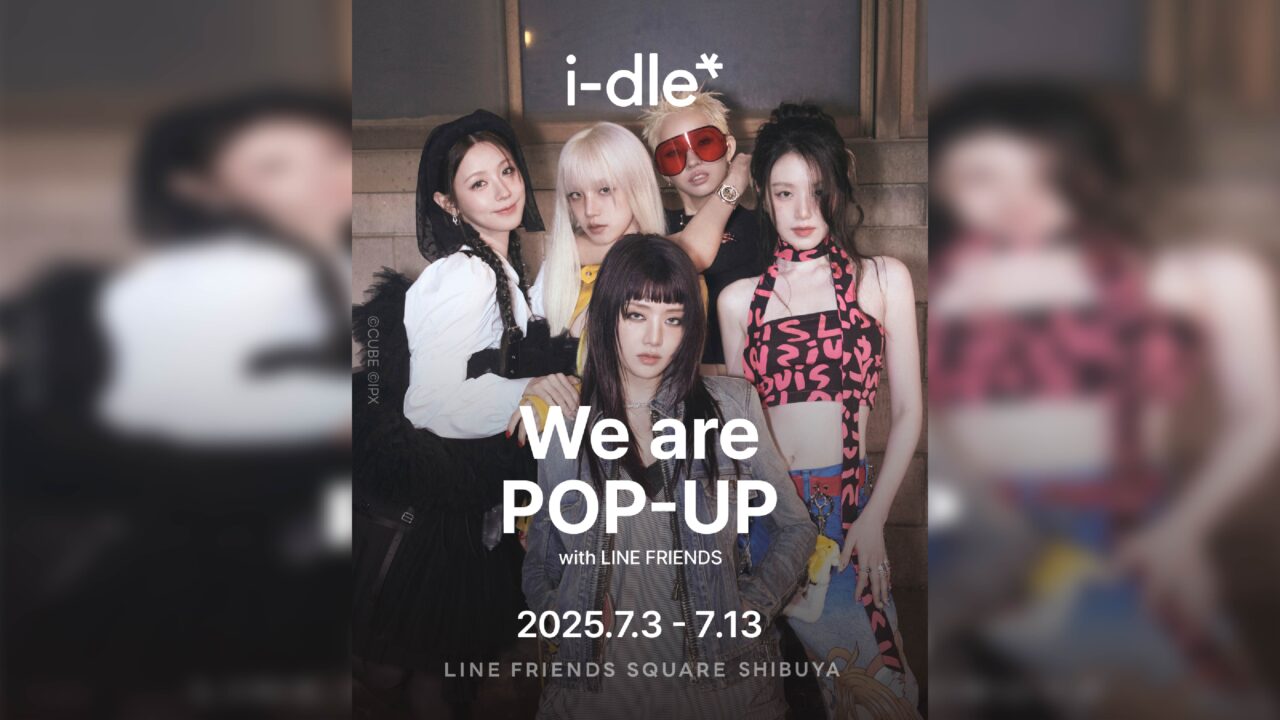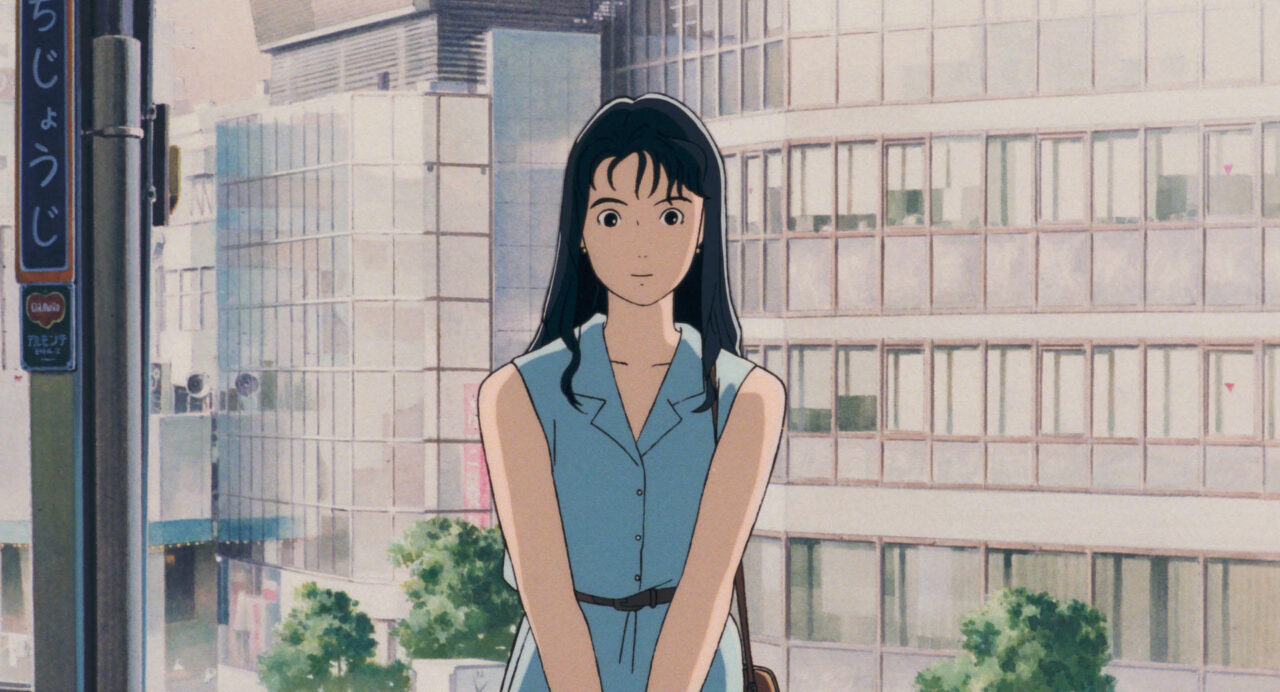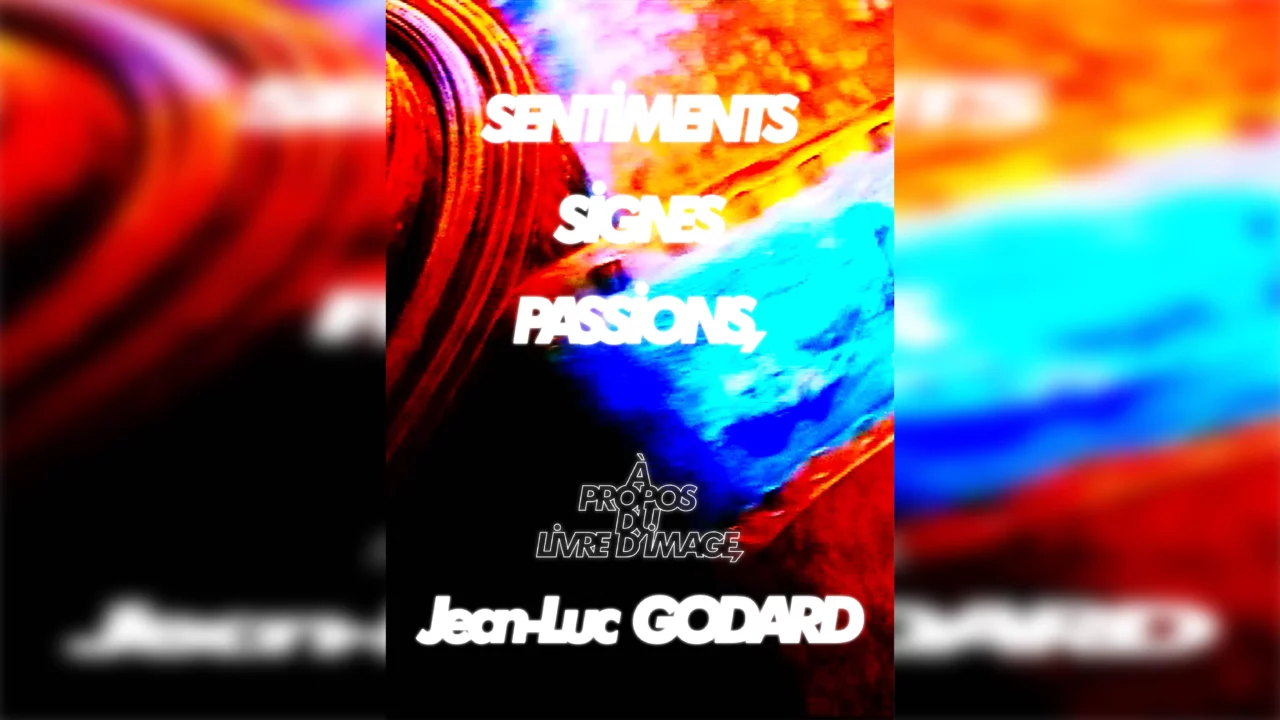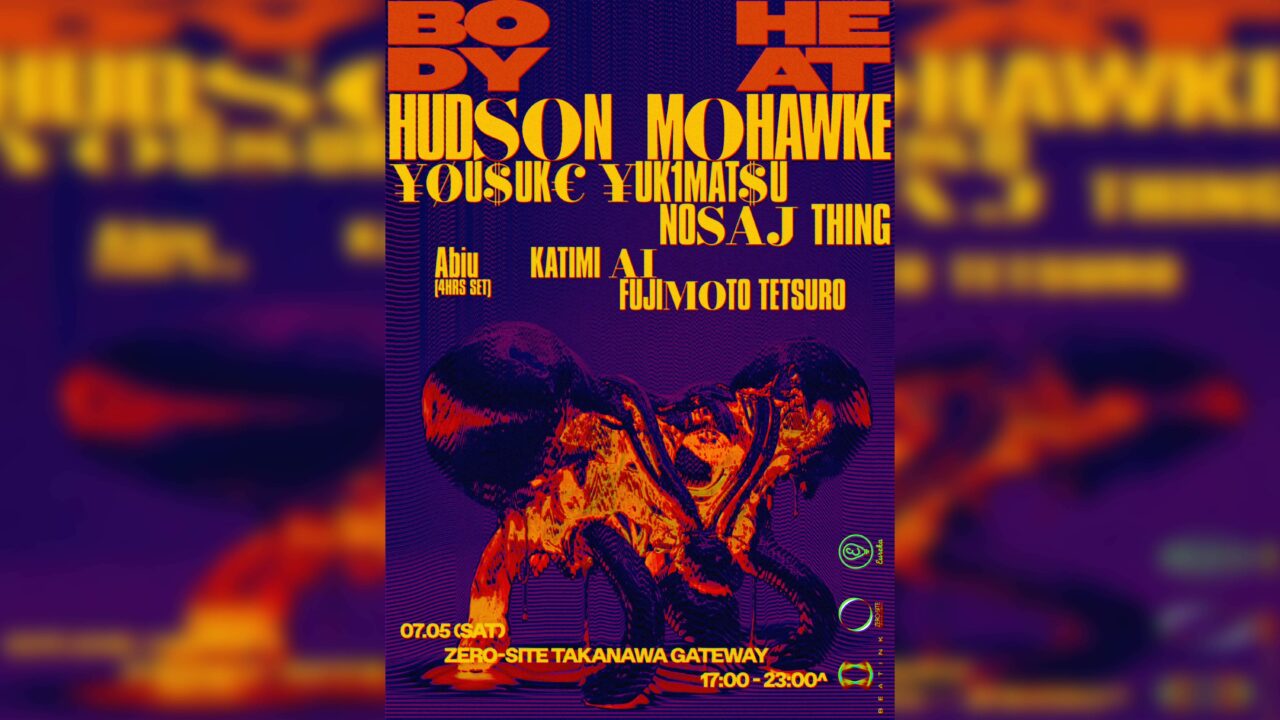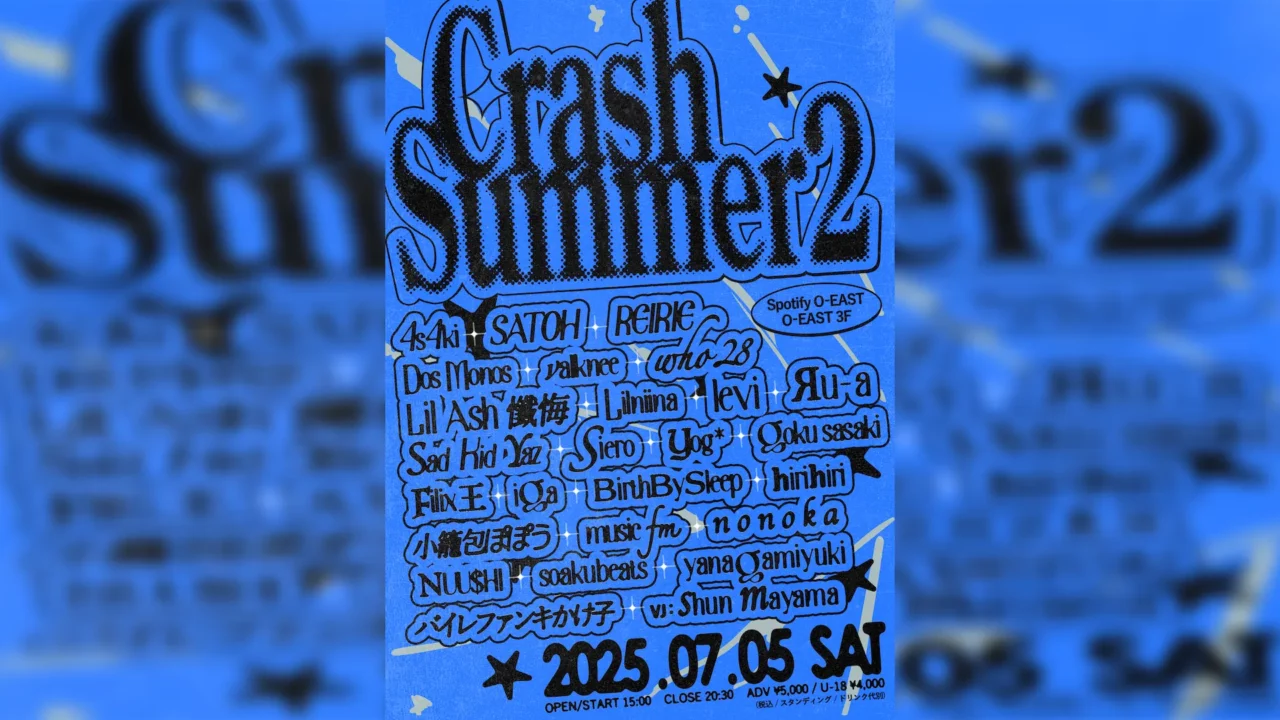The fair-type art event “EASTEAST_TOKYO2023” held at the Science Museum in Tokyo in February 2023 was a great success. The number of visitors exceeded 10,000, not to mention the players such as artists, galleries, and collectors. Moreover, the audience was not only so-called art people, but also people from diverse cultural communities that crossed genres such as music and fashion. The enthusiasm of the venue, which seemed to be a condensed version of Tokyo’s cultural scene, even evoked the nostalgic atmosphere of the pre-Corona days. Three years after “EAST EAST_Tokyo” was originally launched in 2020, “EASTEAST_TOKYO2023” has undergone a major renewal. What kind of project was this multidirectional art event, which included not only exhibits but also food, live music, performances, and talks? The founders, Yuta Takeda (LOGS), advisor Toru Matsushita (SIDE CORE), and director Kiyoshi Kurotaki (Decameron), talked about the concept of the event, the methodology of curation, the “cultural ecosystem and their vision of a “cultural ecosystem,” as well as their future plans.
INDEX
Raising Questions about Existing Art Fairs
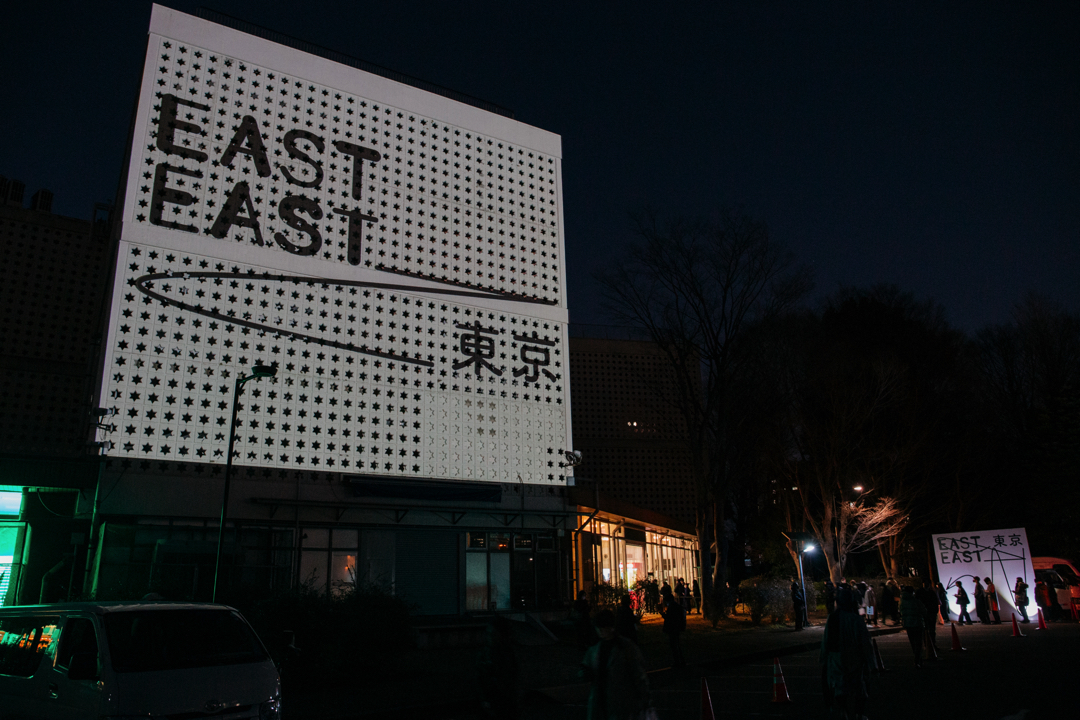
ー”EASTEAST_TOKYO2023″ was a great success, and I would like to ask you mainly about your impressions and response to the fair. What was your intention in launching a new art fair in the first place?
Matsushita: It was to raise an issue about the existing art market. There is a strong power structure in the art market, with “Art Basel” (Switzerland), one of the largest art fairs in the world, at the top. There, artists are nothing more than decorations and are not allowed to make a statement. But the art fair is also an important place for us. That is why we wanted to formulate our own view of the market. No matter how powerful the current system is, we wanted to show our rebellious attitude like Don Quixote.
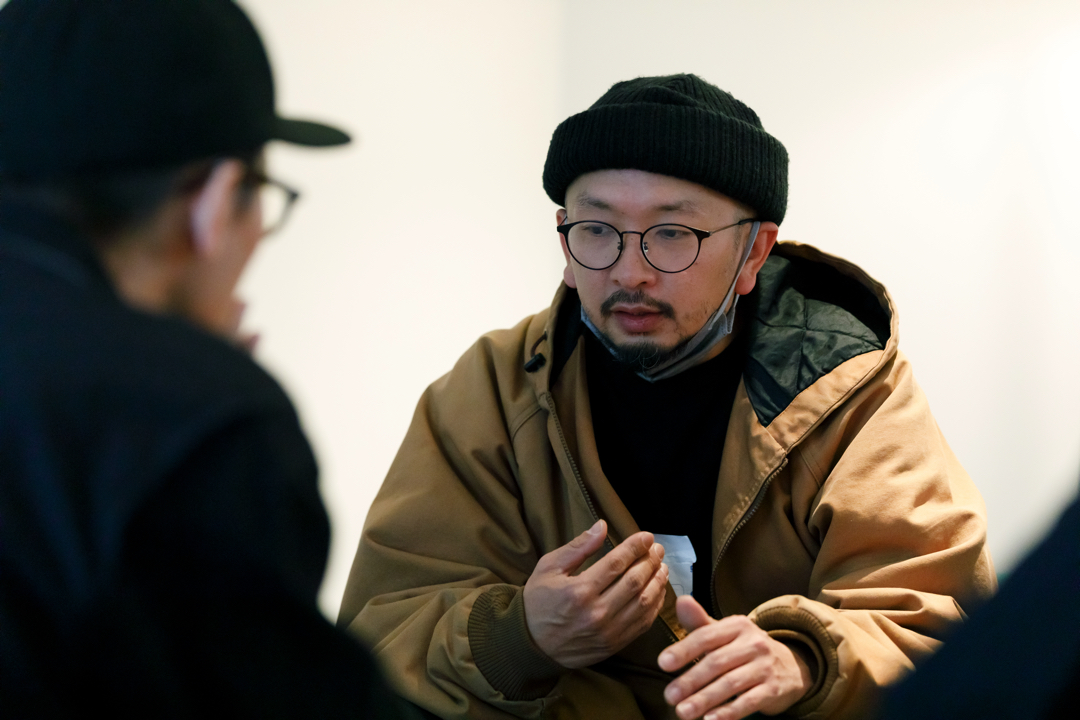
Profile of SIDE CORE
Started activities in 2012. Members are Sakie Takasu, Toru Matsushita, and Taishi Nishihiro. They develop projects set in public spaces from the perspective of street culture. They work both indoors and outdoors under the theme of “Expansion of Expression in Urban Space” to shift thinking, intervene in the gaps, and expand expression and action. He has actively participated in exhibitions in Japan and abroad, such as “Roppongi Crossing 2022: Coming & Going” (Mori Art Museum, Tokyo, 2022) and “Water Ripples 2021: New Landscape from Vanishing Landscape” (Watari-um Museum of Contemporary Art, Tokyo, 2021).
ーSo you ran into the “windmills” of the existing art market, didn’t you?
Matsushita: However, I don’t think it is enough to simply make the art fair an “artist’s paradise” that is convenient only for artists. Art fairs are above all an opportunity for galleries, and since Instagram, the world has become a place where works can be traded directly between artists and customers, and good galleries are currently facing a difficult situation. In that sense, I wanted to create an art fair where artists, galleries, and collectors can easily project their own ideas and feel at home.
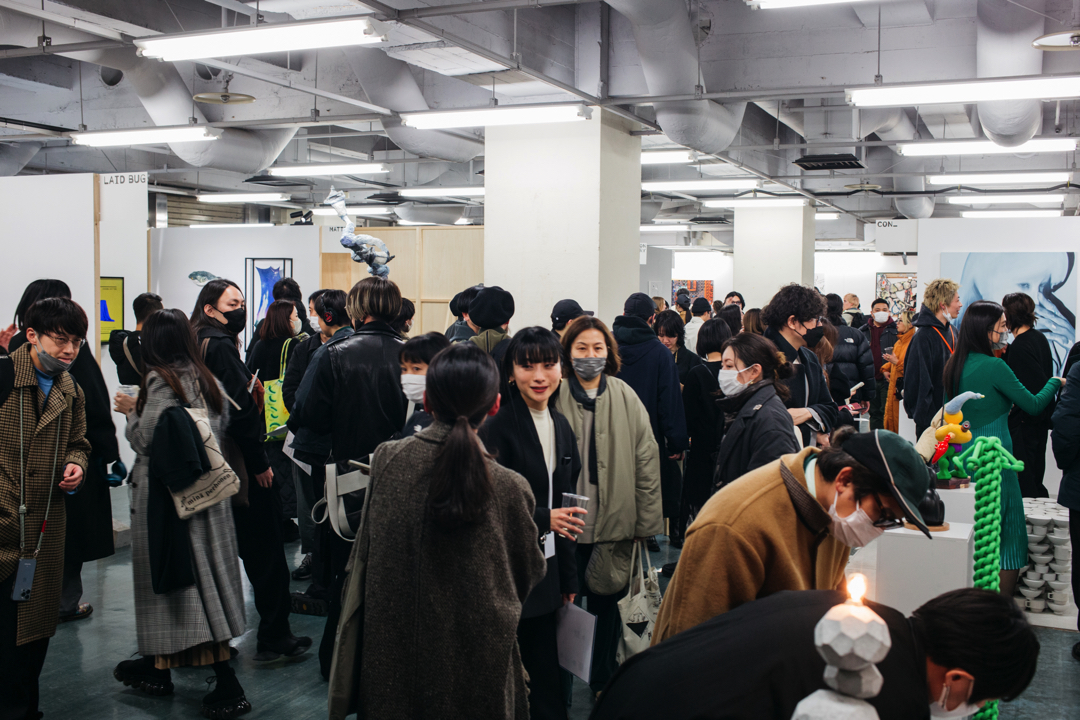
ーThe art fair was launched in this way, and now it has been held on a much larger scale. I am curious as to why the Science Museum was chosen as the venue at this time, three years later.
Takeda: We were lucky to be able to hold the fair at a time when the Corona Disaster had settled down. It was not something we were aiming for at all (haha). However, Matsushita and his team had been discussing the next phase of the project for some time, and when the production team was discussing ideas for the venue, the Science Museum was the obvious choice. When we actually went to see the venue, it was even better than we had expected, and we thought, “This is it! “We decided to go for it. First of all, it had never been used for an art event before, and its location in Kitanomaru Park in the outer gardens of the Imperial Palace is unique, and there is a sense of circulation within the venue. To begin with, none of the staff had imagined doing it in a shiny white cube, so the Science Museum was perfect.
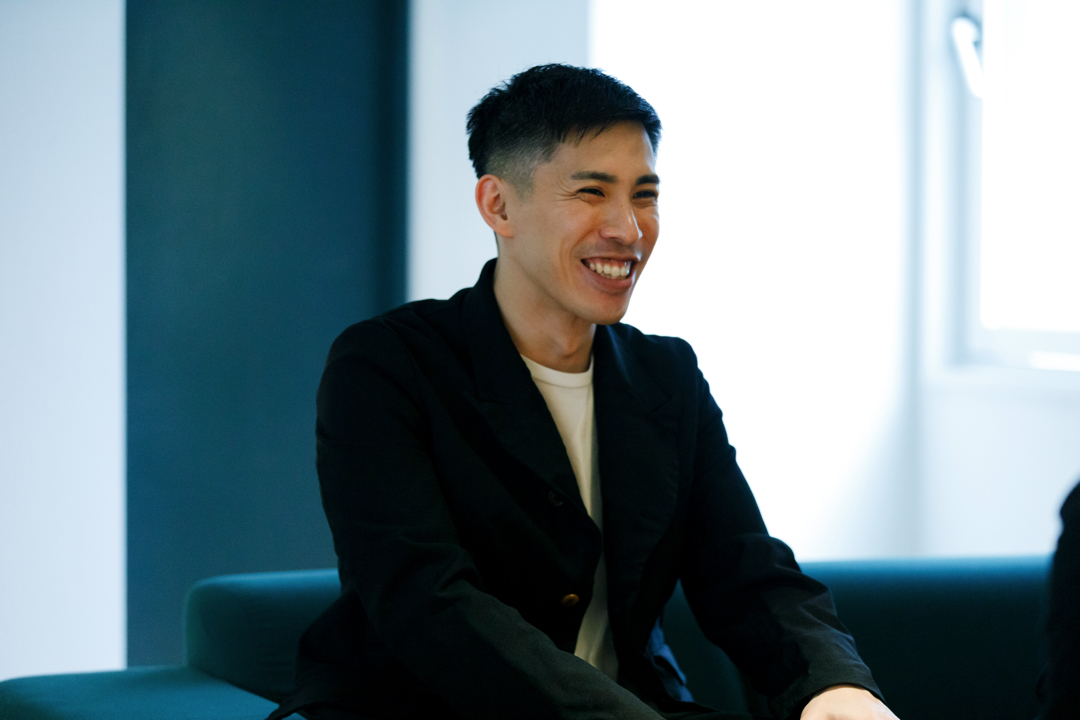
President, Logs Corporation
Yuta Takeda was born in Tokyo in 1984 as the fourth generation of a long-established clothing wholesaler. After graduating from Keio University with a degree in economics, he joined the Strategy Consulting Group of Accenture, Inc. In 2014, he joined the management of a clothing wholesaler whose business was transferred by the family business, and in 2016, he changed the company name to Log’s Corporation. Since then, he has expanded his business into four areas of clothing, food, living and studying, and has established and operates DDD HOTEL (hotel), PARCEL (art gallery), nôl (restaurant), GAKU (creative education for teens), EASTEAST_ (art fair), and others.
Takeda: What “EASTEAST_TOKYO2023” also aimed to do was to expand “EAST EAST_Tokyo,” which was originally a one-team presentation by a group of friends, to the scale of the city of Tokyo. We were aware that various art communities had sprung up in Harajuku, Shinjuku, and other parts of Tokyo, so we asked the directors of this project to bring in new blood from outside the art world in order to introduce them to a wider audience.
Matsushita: I was able to present some of my vision of a new art fair with the first “EAST EAST_Tokyo,” but for “EAST EAST_TOKYO2023,” I wanted to go beyond our own ideas and deal with a broader context and values. That is why Kurotaki was selected as an associate director.
INDEX
Curation, which runs on the dual wheels of “production” and “operation”
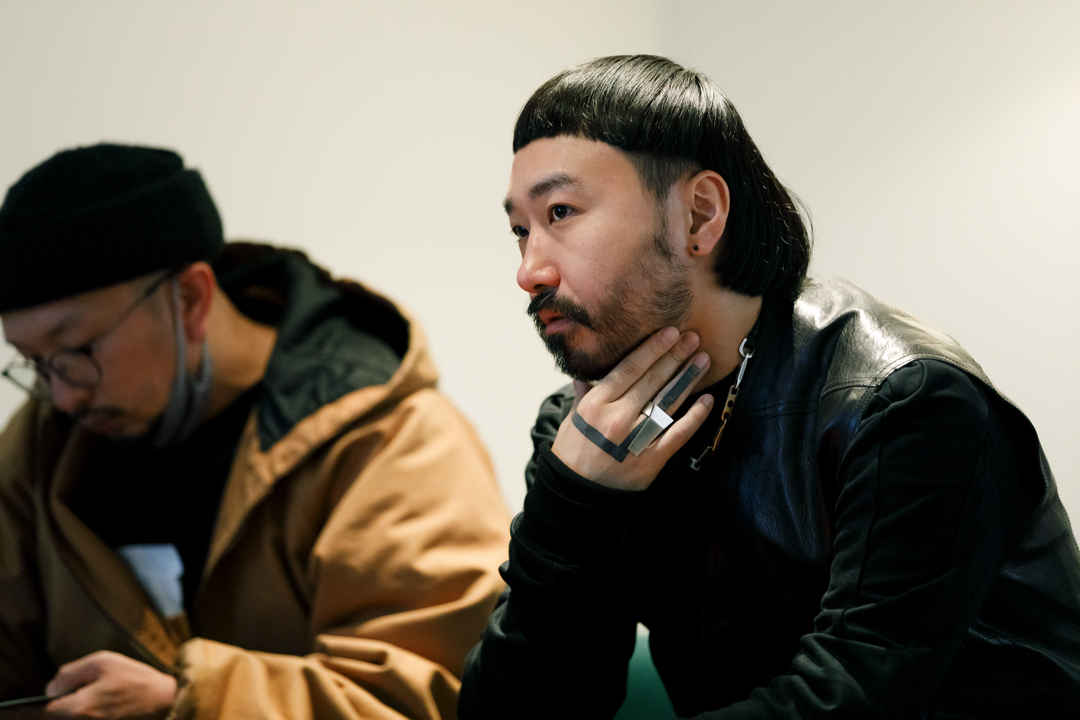
He is in charge of overall direction including planning/operation/food and beverage at Decameron, which opened in the heart of Kabukicho, Shinjuku, in 2020.
Kurotaki: I run a gallery with an attached bar called “Decameron” in Shinjuku Kabukicho. In “EASTEAST_TOKYO2023,” I also introduced “LAVENDER OPENER CHAIR,” a gallery with a restaurant called “Tohmei” in Nishi-Oku. Both we and they are trying to figure out how to become financially independent while engaging in art activities. In this sense, “operation” is probably an important value criterion for me.
ーThey are people who not only simply create and present artworks, but also have the “idea of management.
Kurotaki: I think we are a generation that values both “what we want to do” and “what we should do.” How do they reconcile their art activities, which are difficult to market, and their self-supporting activities, including client work, in order to run on two wheels? I wanted “EASTEAST_TOKYO2023” to reflect the voice of a team that is oriented toward such things.
ーThe exhibition curated by Kurotaki, including performance-type works by MES, was different from the lineup of works usually seen at art fairs, and it caught the attention of many visitors, didn’t it?
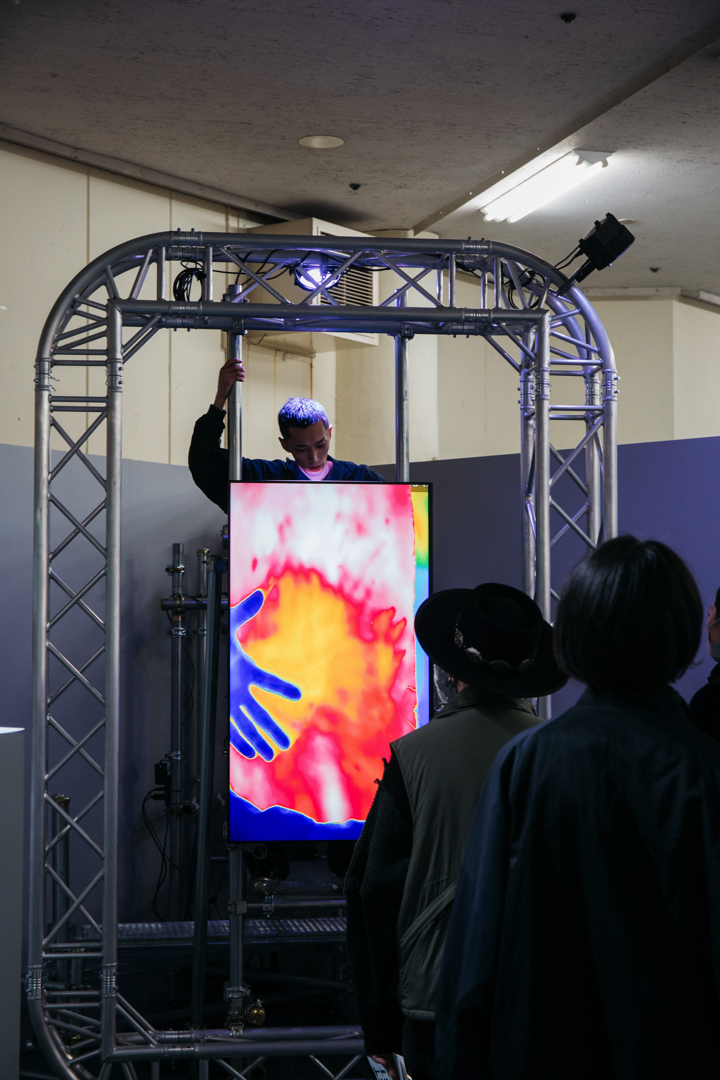
Kurotaki: Of course, I was thinking of generating sales as a fair, but what I was conscious of was how far we could compromise between the artworks and the sales. I believe that the degree to which we can brush up our usual activities together with the viewers should lead to independence and self-sufficiency. As a result, I think we were able to create a booth that is a little different from existing art fairs, where people can appreciate the artists’ expressions without losing sight of them. In terms of curation, through discussions among artists and spaces, we were able to create a flow in which it is hard to tell where the “Decameron” and the “LAVENDER OPENER CHAIR” come from, but there is a commonality. I think this is one of the forms that “EASTEAST_TOKYO2023” is aiming for.
Takeda: I also believe that sales are not everything. People inevitably ask how much money we sold or how many people we attracted from a business standpoint, but I think it would be better if the people at each booth thought about what they wanted to accomplish, whether they achieved their own criteria, and what they want to do next based on that. That’s fine. And the answer to that question should be as many as there are communities, and that is how I envision “EASTEAST_TOKYO2023.
ーI think it would be best if artists and spaces could pursue their own values and aesthetics.
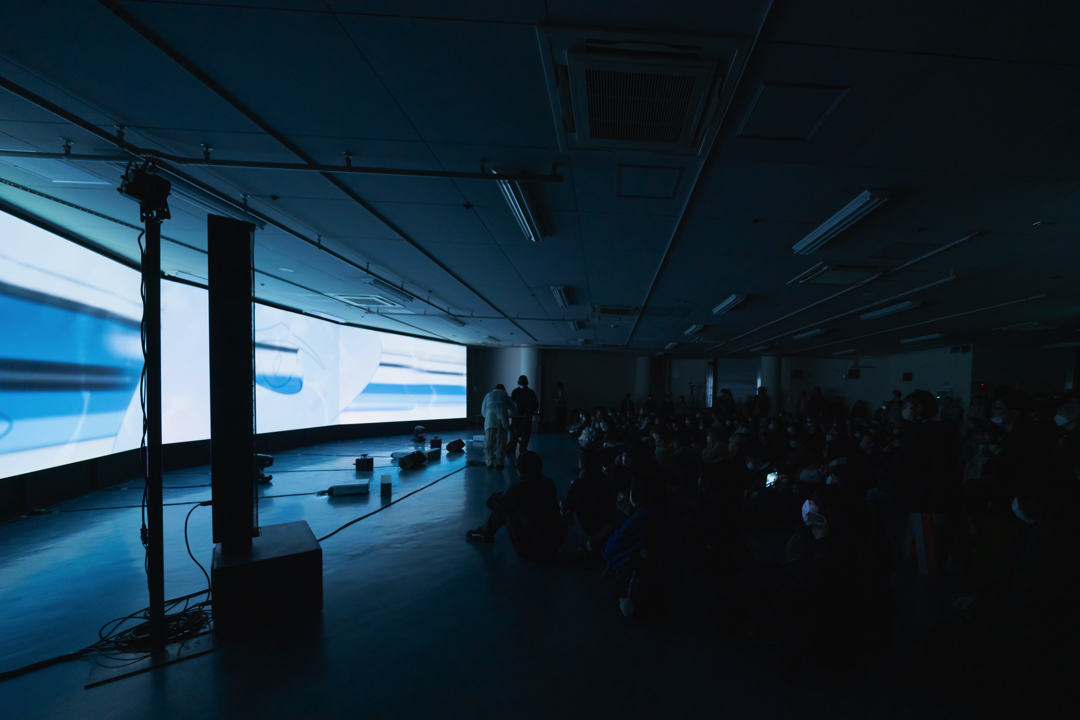
Takeda: I myself am an outsider to the art world, but I don’t see art as an objective at all. We are not running “EASTEAST_TOKYO2023” for the purpose of holding an art fair, but rather to see a moment in the “cultural ecosystem” where art and creativity are used as a medium to regenerate a community between people, and in other words, to see everyone become happy.
INDEX
Cultural Ecosystem” as a Resistance to Symbolization
ーYou just mentioned “cultural ecosystem” as a vision for “EASTEAST_TOKYO2023. I also participated in the “Imagining/Creating a Cultural Ecosystem” talk event held during the exhibition, and took part in the discussion. On your website, it says, “We aim to create a ‘cultural ecosystem’ in which the market economy and culture/art interact in a fair manner.“
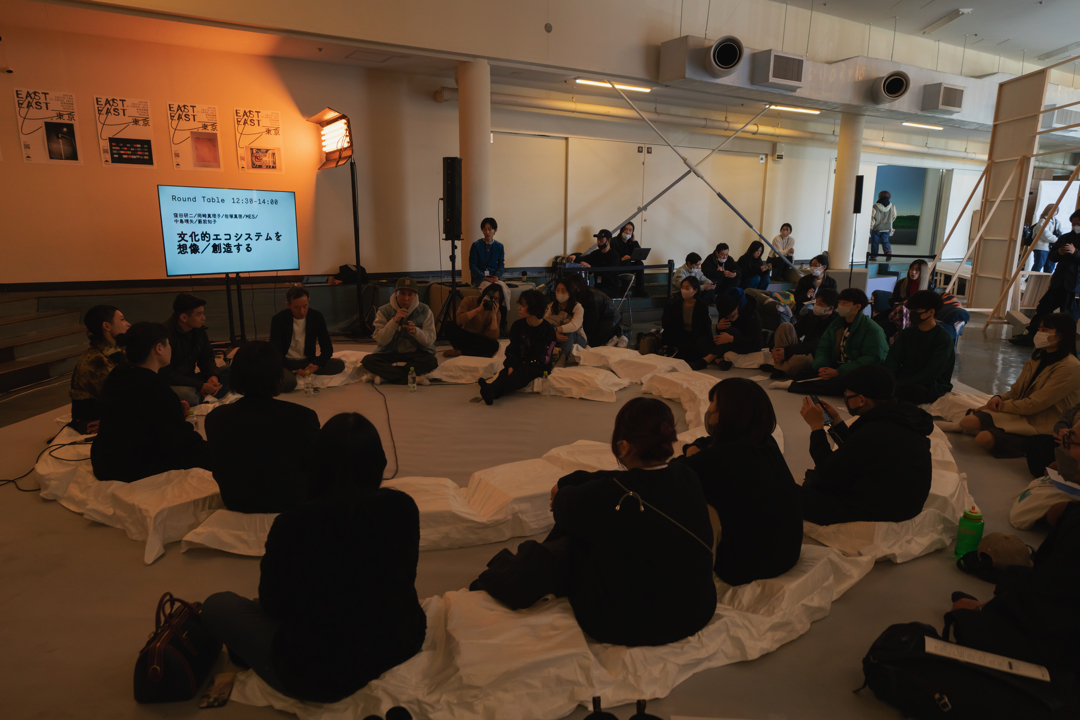
Kurotaki: I don’t know if it directly leads to a “cultural ecosystem,” but for example, our booth was approached by a gallery in Shanghai after we held that exhibition. In this sense, we can say that we have created new opportunities for connections. Or, we have received several other proposals, and we said, “If that’s the approach you want to take, why don’t you ask another team you met at EASTEAST_TOKYO2023 to join us?” And so on. We are now in the stage of sharing offers. I think that we are naturally supporting each other, or the possibility of mutual support has emerged.
ーSo, not only within the team, but also horizontal connections with other artists and galleries have been created.
Kurotaki: Yes, we have developed relationships and contacts with people and spaces that we had previously been distant from. I don’t know if this is the right way to put it, but I have come to realize that people who I thought were acting in a way I didn’t like, have a surprisingly common perception with me, just because they were performing in such a way (haha).
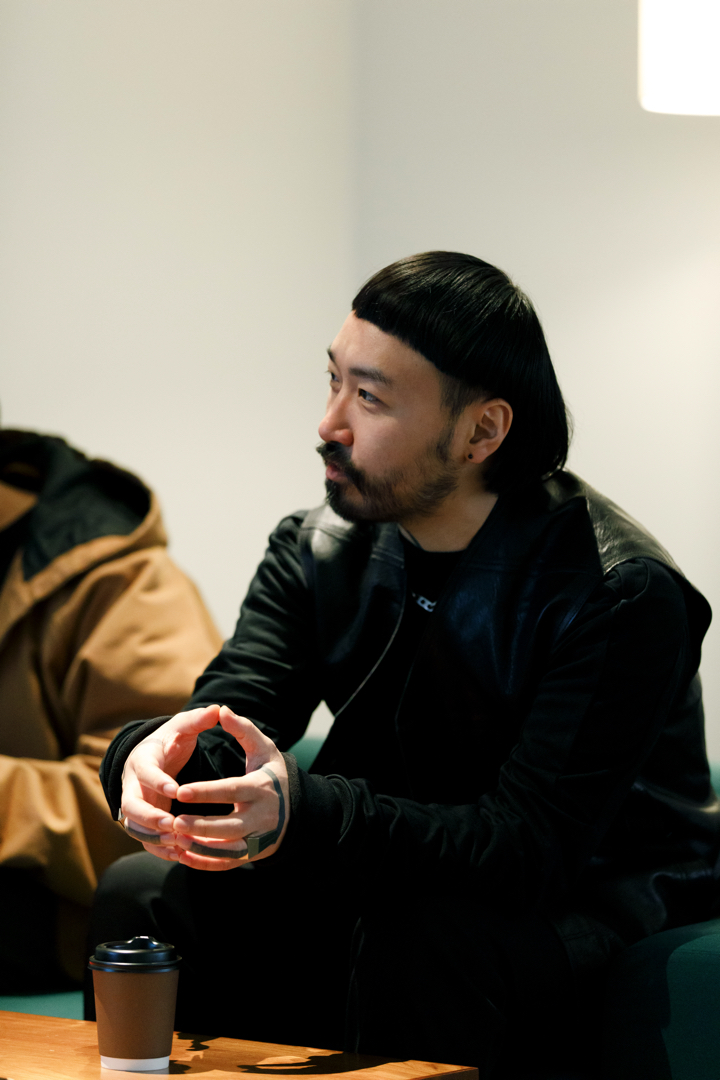
ーIt’s true that some of the discomfort I felt when I only read what people said on social networking sites can be easily resolved through face to face communication in a real space (haha). This may also be an important element of the “cultural ecosystem.“
Takeda: My personal view is that in the information society, not to mention SNS, people and events are often consumed as “symbolized information.” It is true that extending “symbolization” is sometimes the best way to do business, but there are still areas where misunderstandings and divisions are created by this. It’s a sense that something connective is missing.
Therefore, I believe that we must be conscious of the trend in society to “symbolize” and consume people and events.
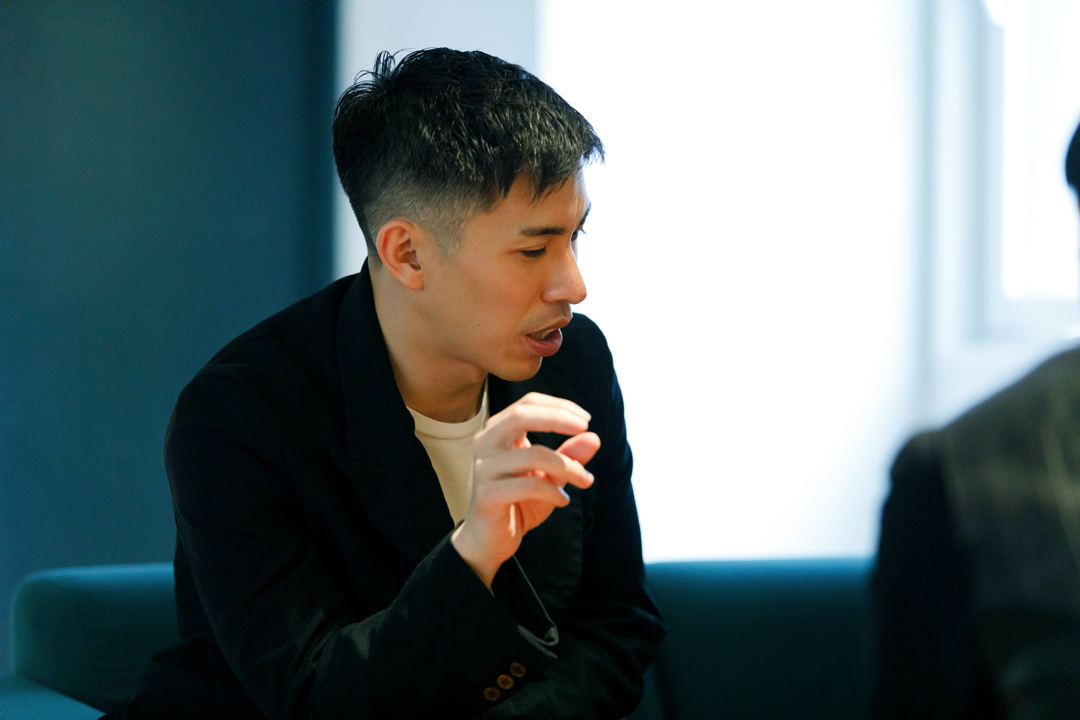
Takeda: What was often said at the “EASTEAST_TOKYO2023” event was, “There were more people from various communities than I had expected.” “There are this person and that person!” and so on. Actually, that is not something that we, the secretariat, created by ourselves. The liveliness that existed at that venue was something that each gallery and artist had originally. But by combining them, we were able to create a tremendous amount of enthusiasm. In other words, it was not so much that “EASTEAST_TOKYO2023” created excitement, but rather that it proved how interesting the community was that had worked so hard against symbolism. I think what was present at that event was “the sense that each and every one of us is regenerating our own community.” There were many encounters that made you say, “Oh, it’s been a long time!”
ーI felt that very much myself.
Takeda: But that is something you have built up on your own. As a result, I think that everyone has regained a sense of community that they had almost forgotten.
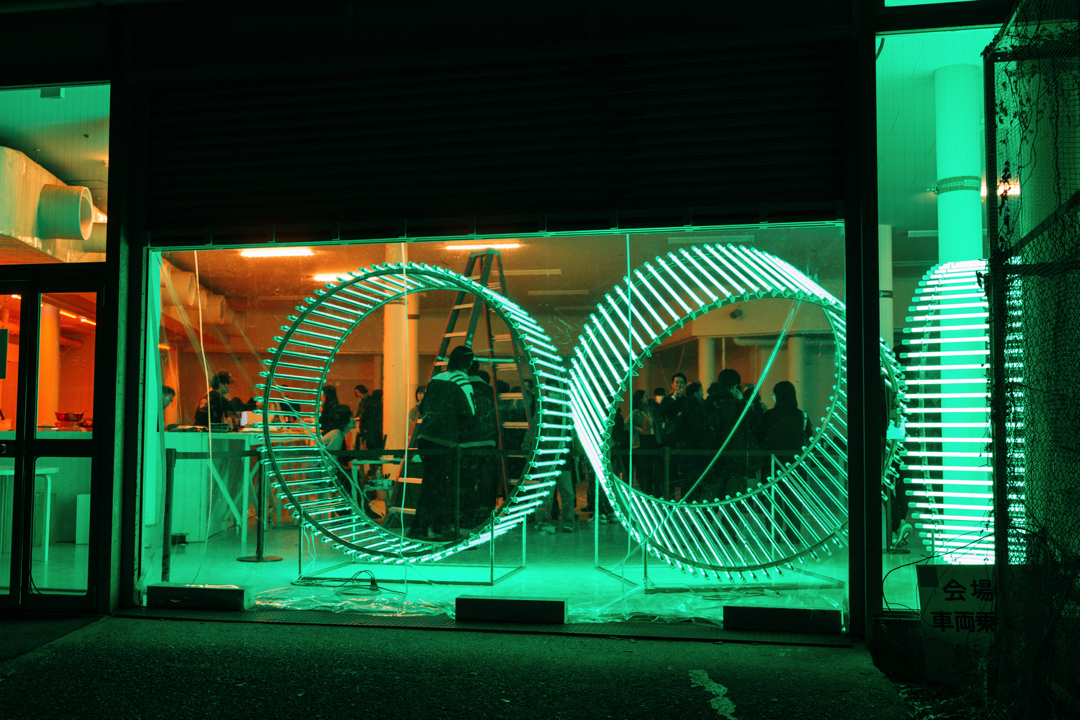
INDEX
Historical Contextualization and Crossing Different Genres
ーMatsushita was navigating the viewing tour at the venue, and there were works by Akira Subaru, a painter who painted the landscape of the hard-to-return zone in Fukushima, in the PARCEL booth, and a booth by Gallery Trax, a space in Yamanashi, and many other booths, not only in Tokyo but in various other areas. Artists and galleries from various areas as well as Tokyo were introduced, weren’t they?
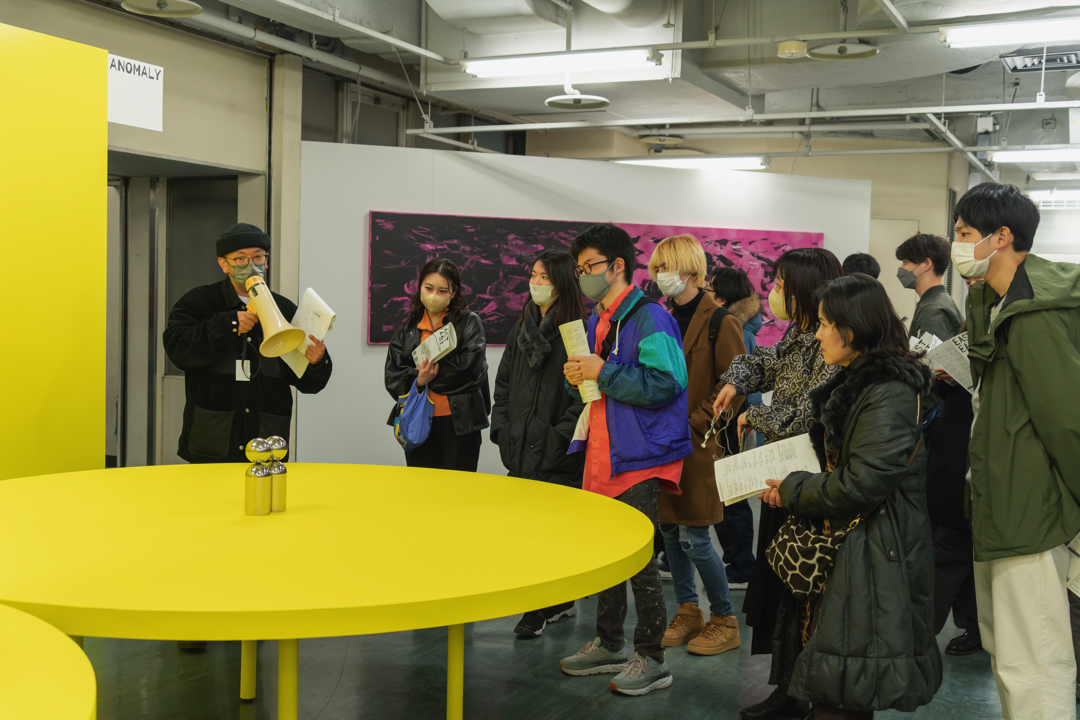
Matsushita: An important context for me is the perspective of viewing galleries that are close to the community that have emerged from within the city since the Great East Japan Earthquake as historical. Many of the galleries that emerged after the earthquake functioned more as places for communication than as commercial spaces. I invited many galleries with such individuality, including spaces I had not known about until I did my research. For example, GALLERY SOAP in Kitakyushu is an artist-run space that has been active since the 1990s. I wanted to show the contemporary situation based on that history, not just the values of our own generation. In that sense, I think we were able to show the history of contemporary art, which is different from what you can see at other art fairs.
ー You were conscious of not only the spaces that are currently popular, but also the historical linkages from the 1990s and the post-earthquake period, weren’t you? On the other hand, even from the perspective of the present, the fair was not limited to art, but crossed over into a variety of other genres, such as kitchens serving food and drink, sound performances, and so on.
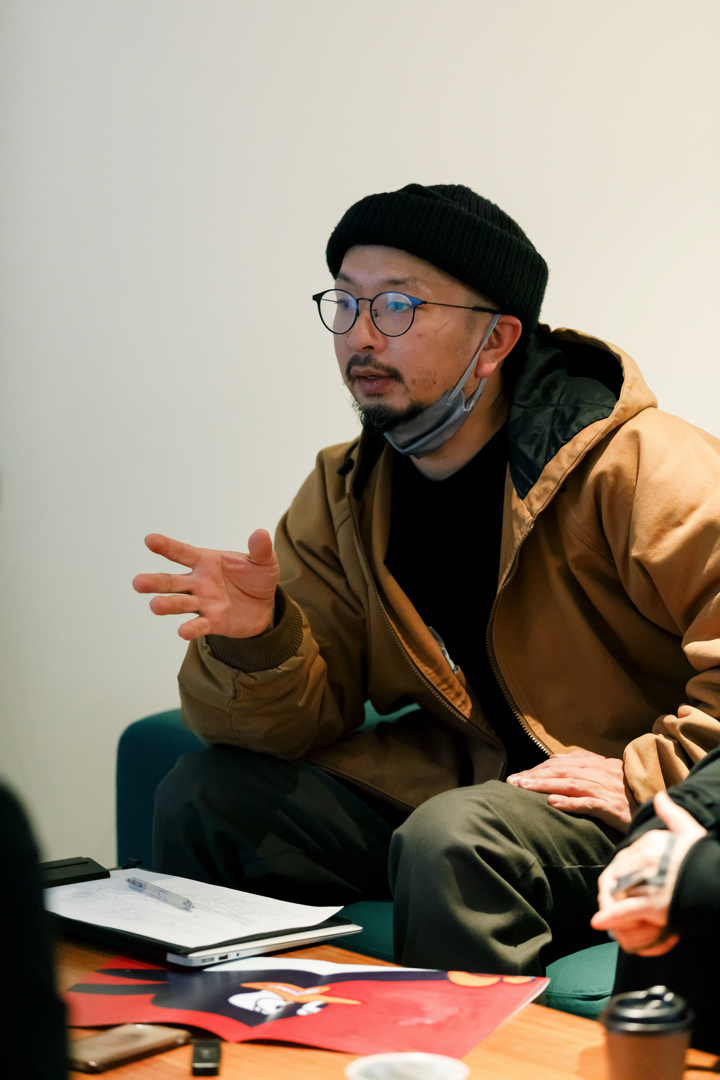
Matsushita: After all, since the 1990s, galleries as a community did not emerge only from within the art world. Nowadays, it is commonplace to approach art from the outside, to the extent that fashion brands all have their own galleries. I have been influenced by such outside sensibilities, even though they are sometimes ignored within the authoritative framework of art. That is why the director team is made up of people who are not originally from the art field.
ー The venue was a mix of people from various genres, and both the players and the audience were gathered together in a rush.
Takeda: Of course, numbers are not everything, but we had about 10,000 visitors, and the response was very positive.
Kurotaki: I also felt that “EASTEAST_TOKYO2023” has a good chance of becoming one of the models for future fairs, because the atmosphere was completely different from what I usually see at art fairs.
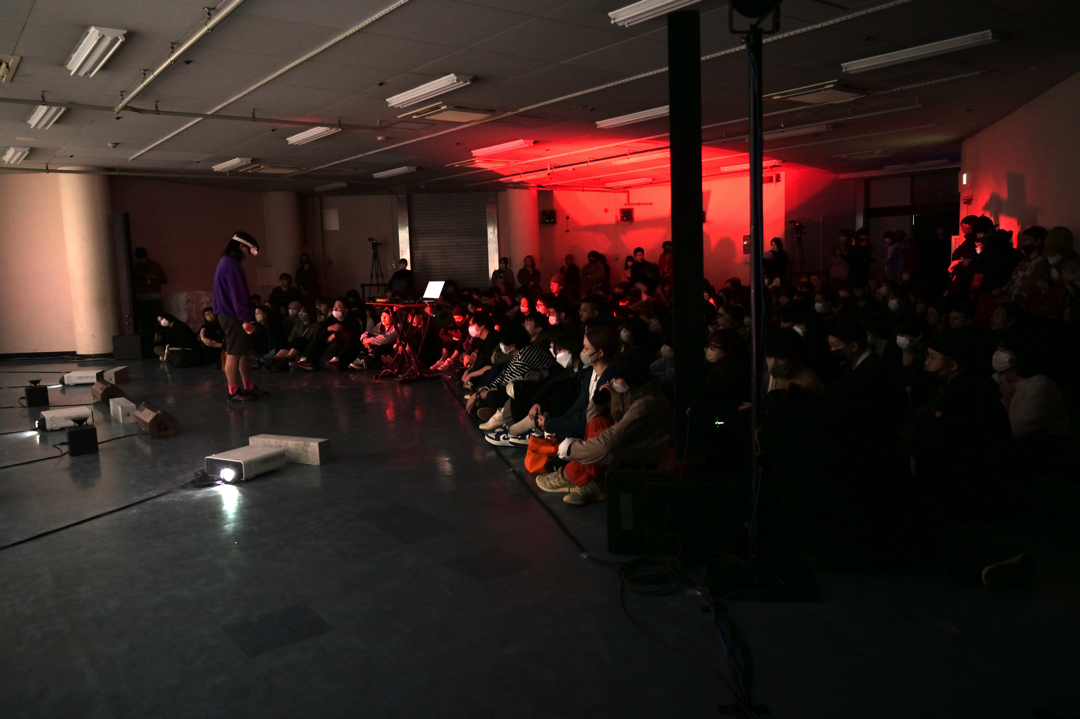
INDEX
The next goal is to collaborate with the Asian region
ー Finally, how do you plan to develop this project in the future?
Matsushita: Nothing has been clearly decided yet, but actually one of our goals when we first launched “EAST EAST_Tokyo” was to collaborate with galleries overseas. This time, due to the Corona disaster, the only overseas exhibitors were in the video program, but next time we would like to have many overseas galleries participate. In particular, “EASTEAST_TOKYO2023” would like to commit to the Asian region. We would like to interact with Asian artists and galleries that share similar values. Of course, I don’t think it is enough if we just mingle or if we all get along. We share the same place and create new values, so we are both influenced by each other. ……
ー So you are influenced by each other, but you don’t have to be in sync with each other?
Matsushita: Yes, yes, we don’t have to be in sync. We are not trying to create a single organization with this project. On top of that, I am not necessarily fixated on Asia, but in the context of “EASTEAST_TOKYO2023,” I would like to communicate with people in Asian countries, such as Korea, Southeast Asia, and China.
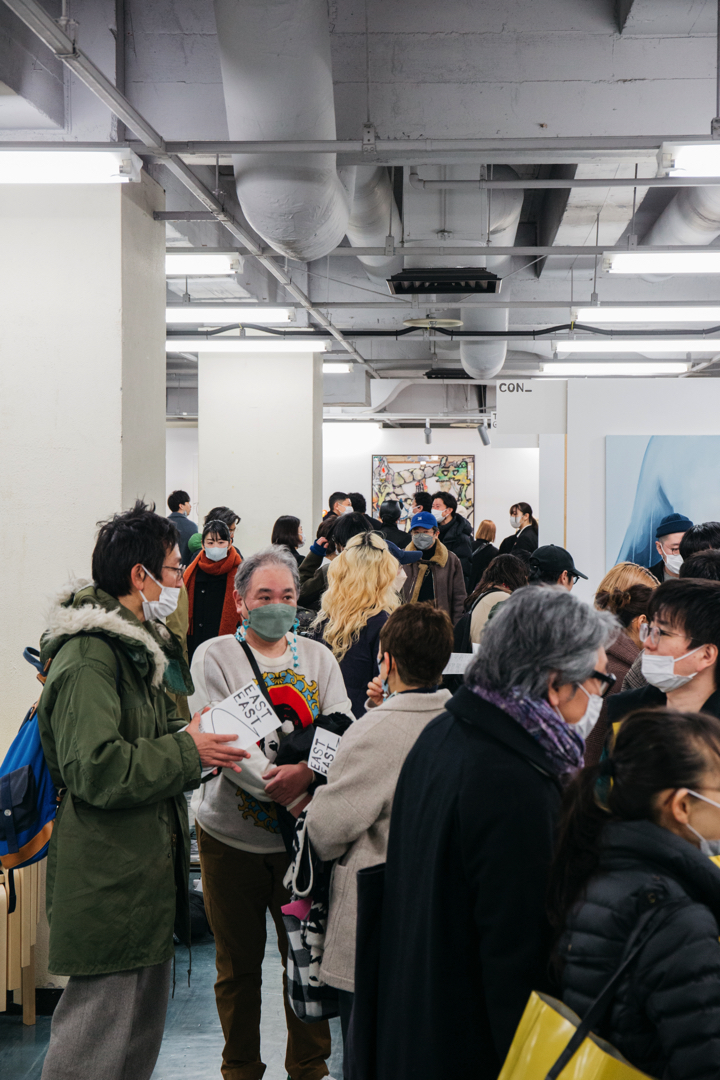
Takeda: Speaking of participation from the Asian sphere, members of Gudskul (Goodskul) were guests at this year’s talk event. Gudskul is a collective co-run by ruangrupa, an Indonesian art collective that served as artistic director for last year’s “Documenta 15” (an international art exhibition held in the German city of Kassel). Our staff actually traveled to Jakarta to make contact with them. We want to use this project as an opportunity to create that kind of human connection. This is not symbolic consumption like “Luang Rupa” or “Documenta” with brackets. It would be nice if we could extend our community in that way to Asia.
Kurotaki: For my part, I think it would be good to see something like a small “EASTEAST_TOKYO2023” emerge. There is also talk of launching our own linked project with the teams and galleries we worked with this time. We don’t know how far we can go yet, but we hope that a number of small projects like this will be launched and give back to the Japanese community.
